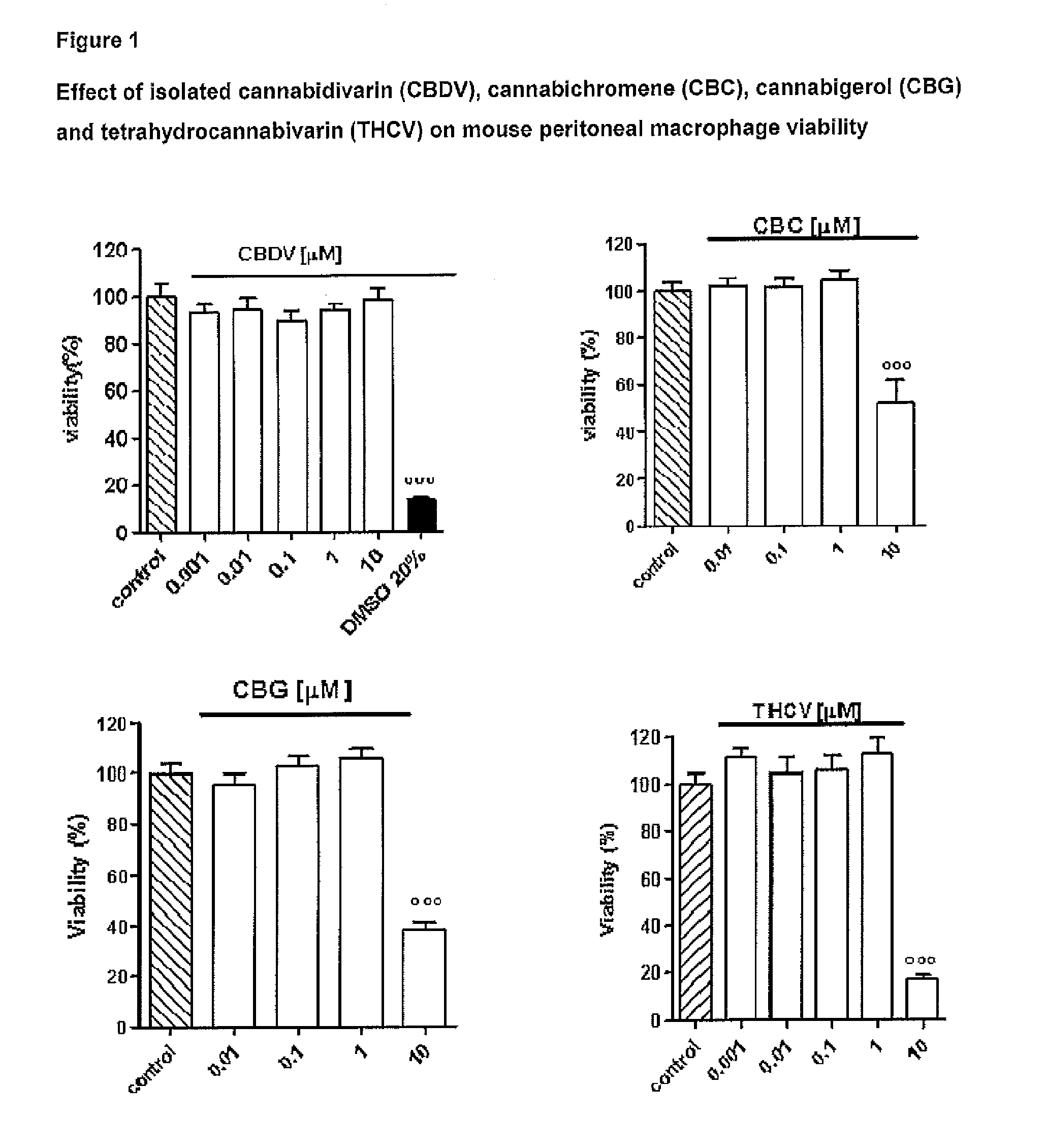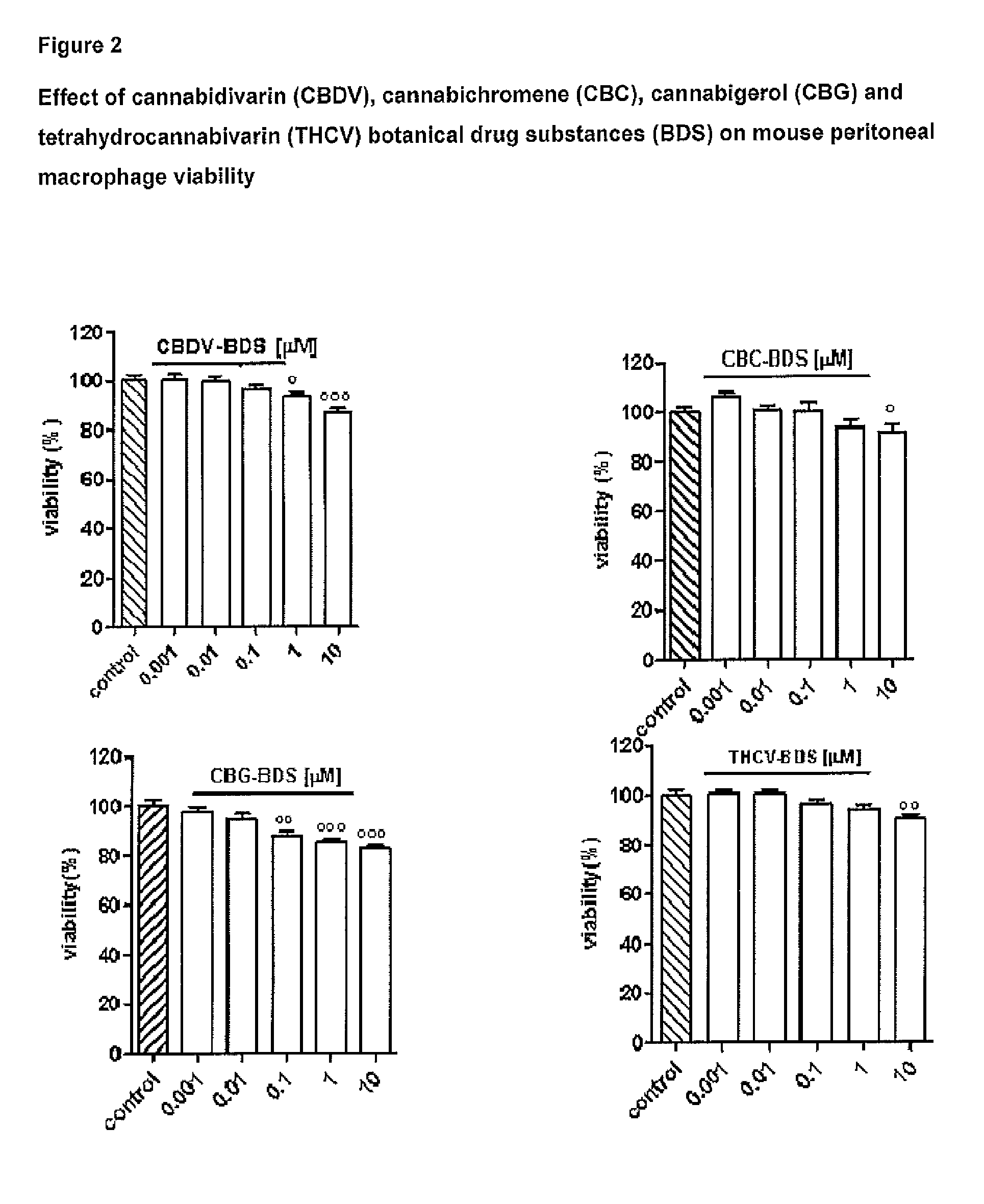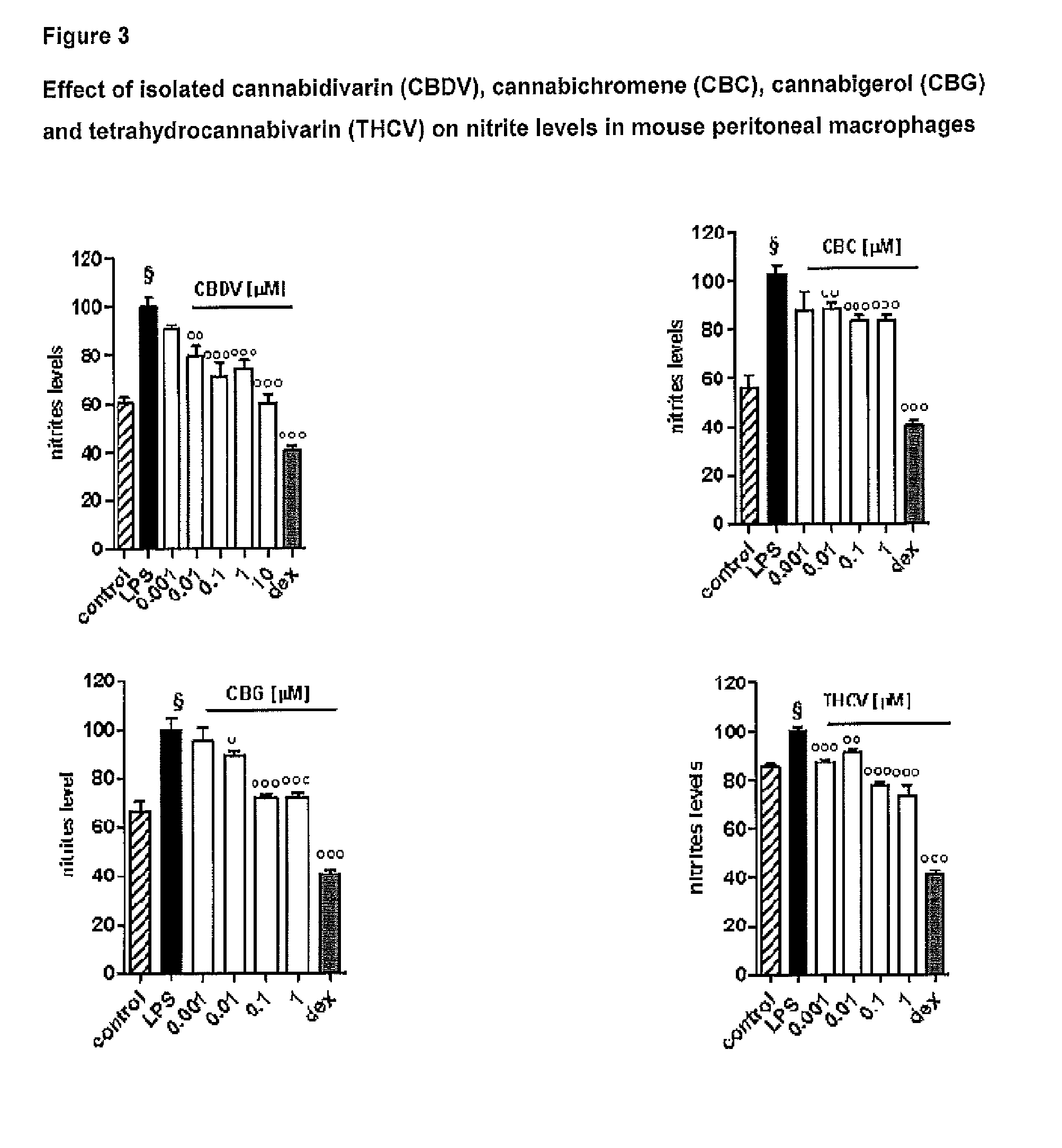Phytocannabinoids for use in the treatment of intestinal inflammatory diseases
- Summary
- Abstract
- Description
- Claims
- Application Information
AI Technical Summary
Benefits of technology
Problems solved by technology
Method used
Image
Examples
example 1
Effect of Tetrahydrocannabivarin (THCV), Cannabigerol (CBG), Cannabichromene (CBC) and Cannabidivarin (CBDV) on Mouse Peritoneal Macrophages
Materials and Methods
[0099]Test Articles:
[0100]The following isolated phytocannabinoids and their corresponding botanical drug substances (BDS) were evaluated: THCV, CBG, CBC and CBDV. These compounds were dissolved in DMSO or ethanol, which, at the concentration used (0.01%), had no effect on the responses under study.
[0101]Isolation of Mouse Peritoneal Macrophages:
[0102]Peritoneal macrophages were obtained from mice as previously described by Rossi et al. (Rossi et al. 2010). Briefly, to evoke the production of peritoneal exudates rich in macrophages, mice were injected intraperitoneally (i.p.) with 1 ml of 10% sterile thioglycollate (Sigma, Milan, Italy). After 4 days, mice were euthanized and peritoneal macrophages were collected and seeded in appropriate plates for performing in vitro experiments.
[0103]Cell Culture:
[0104]Peritoneal macropha...
example 2
Effect of Cannabigerol (CBG), Cannabichromene (CBC) and Tetrahydrocannabivarin (THCV) in an Murine Experimental Model of Ulcerative Colitis
Materials and Methods
[0123]Test Articles:
[0124]Cannabigerol (CBG), cannabichromene (CBC) and tetrahydrocannabivarin (THCV) were dissolved in ethanol / Tween20 / saline. Animals were placed in groups and administered with test article (60 μl per mouse) via IP once daily. Treatment started 3 days before DNBS administration for the preventative treatment experiments or 1 day after DNBS administration for the curative treatments. Test article was administered daily until the sacrifice of the animals, 3 days after DNBS treatment. THCV was only tested for a curative effect.
[0125]Induction of Colitis:
[0126]Colitis was induced in mice by the intra-colonic administration of DNBS. Briefly, mice were anesthetized and DNBS (8 mg / mouse) was inserted into the colon using a polyethylene catheter (1 mm in diameter) via the rectum (4.5 cm from the anus). Three days a...
PUM
| Property | Measurement | Unit |
|---|---|---|
| Mass | aaaaa | aaaaa |
| Mass | aaaaa | aaaaa |
Abstract
Description
Claims
Application Information
 Login to View More
Login to View More - R&D
- Intellectual Property
- Life Sciences
- Materials
- Tech Scout
- Unparalleled Data Quality
- Higher Quality Content
- 60% Fewer Hallucinations
Browse by: Latest US Patents, China's latest patents, Technical Efficacy Thesaurus, Application Domain, Technology Topic, Popular Technical Reports.
© 2025 PatSnap. All rights reserved.Legal|Privacy policy|Modern Slavery Act Transparency Statement|Sitemap|About US| Contact US: help@patsnap.com



